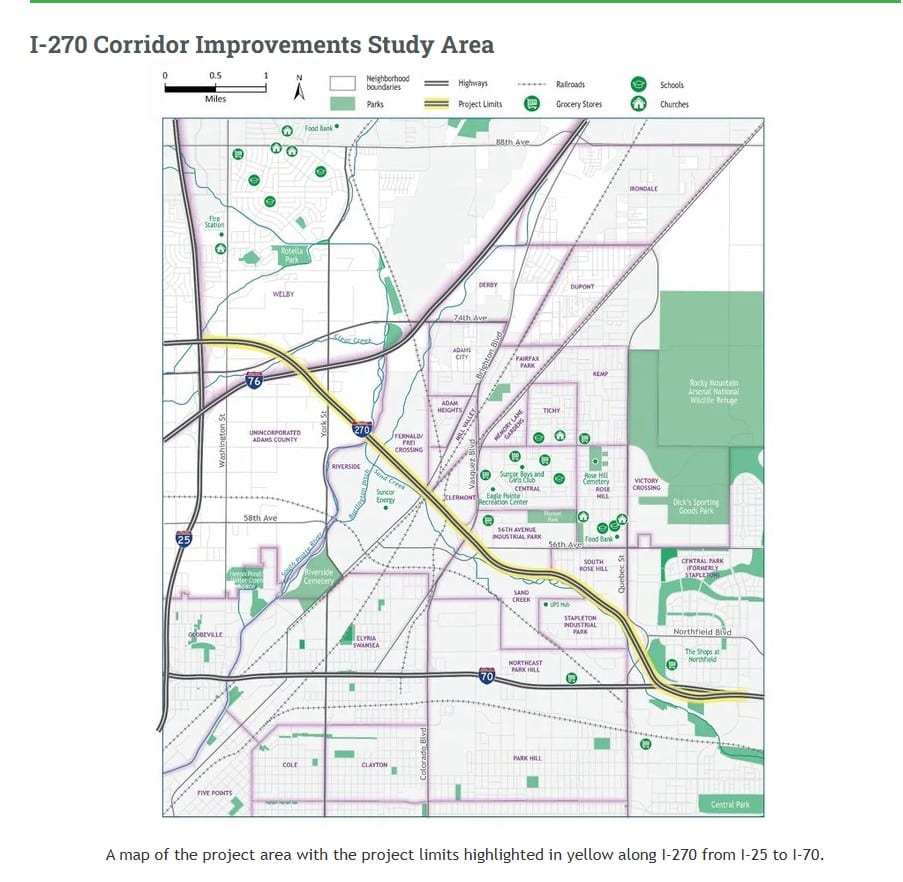


Interstate 270 (I-270) runs from Adams County towards Boulder County in Commerce City and North Denver. Every day, more than 100,000 vehicles travel the highway. Depending on location, 8-17 percent of its daily traffic is freight trucks. The congested interstate carries far more traffic than it was designed for. The pavement and bridges are stressed by the traffic loads, and emergency repairs are needed regularly. The corridor also lacks safe and efficient walking, cycling, and public transportation options for residents and businesses near the highway.
Culturally diverse neighborhoods surround the I-270 corridor and rely on and are affected by the interstate. Residents and other groups have raised concerns that communities in the study area may not experience environmental justice. Environmental justice is defined in various ways in both state and federal laws, regulations, and/or guidance, and generally means fair treatment and meaningful involvement of all people regardless of income, race, color, national origin, Tribal affiliation, or disability.
The Colorado Department of Transportation (CDOT) and the Federal Highway Administration (FHWA) began a National Environmental Policy Act (NEPA) process in 2020, initially anticipating an Environmental Assessment. Moving into 2023, CDOT determined a more detailed environmental review was needed and requested an Environmental Impact Statement (EIS) be initiated. A Notice of Intent was published in August 2024. The NOI begins the two-year timeline to complete the National Environmental Policy Act (NEPA) process. CDOT welcomes additional project comments through the online feedback portal on our website or via project email. Comments are also shared with FHWA.

A map of the project area with the project limits highlighted in yellow along I-270 from I-25 to I-70.
The purpose of the I‐270 Corridor Improvements project is to:
The identified transportation needs are as follows:
In addition to addressing project needs, CDOT, the Federal Highway Administration (FHWA), and participating agencies have established a key project goal: to minimize environmental and community impacts resulting from the project. The project planning and decision-making process will consistently remain mindful of this environmental goal.